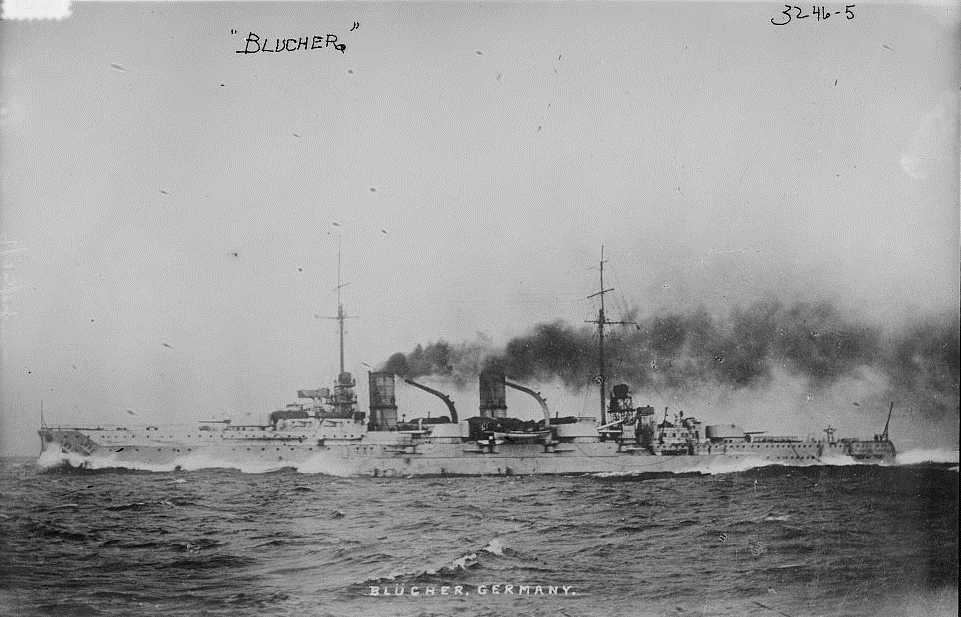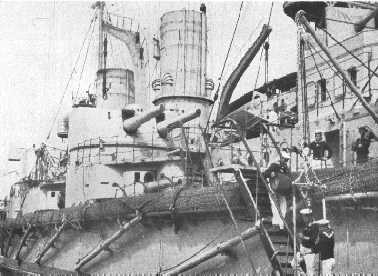| Notes:
1) All but the forward wing turrets fed
from common projectile/propellant ammunition magazines with two fixed hoists
passing projectiles and main charges to a handling room below the gunhouse.
Upper hoists revolved with the gunhouse. Each gun had a single hoist
which fed both projectiles and main charges to the gun while the fore charge
was supplied by auxiliary hoists located between the main hoists.
The working chamber held ready ammunition, storing either 38 APC or 34
HE, 26 main and 52 fore charges. These allowed the guns to fire at
about six rounds per minute until these were used up and then about 4 to
5 rounds per minute afterwards.
2) Forward wing turrets differed from the
other turrets in that they were fed from a combined magazine located beneath
the rear wing turret via a centerline conveyor belt. This fed the
turret handling rooms via inclined hoists, one for projectiles and one
for main charges. Fore charges were passed into the handling room
through openings in the barbette.
3) Gun axes were 70.9 in (180 cm) apart.
4) Armor thickness given in "Naval Weapons
of World War One" by Norman Friedman:
Face: 7.1 in (18
cm)
Sides: 5.5 in
(14 cm)
Rear: 6.2 in
(15.8 cm)
Roof: 2.4 to
3.1 in (6 to 8 cm) |

